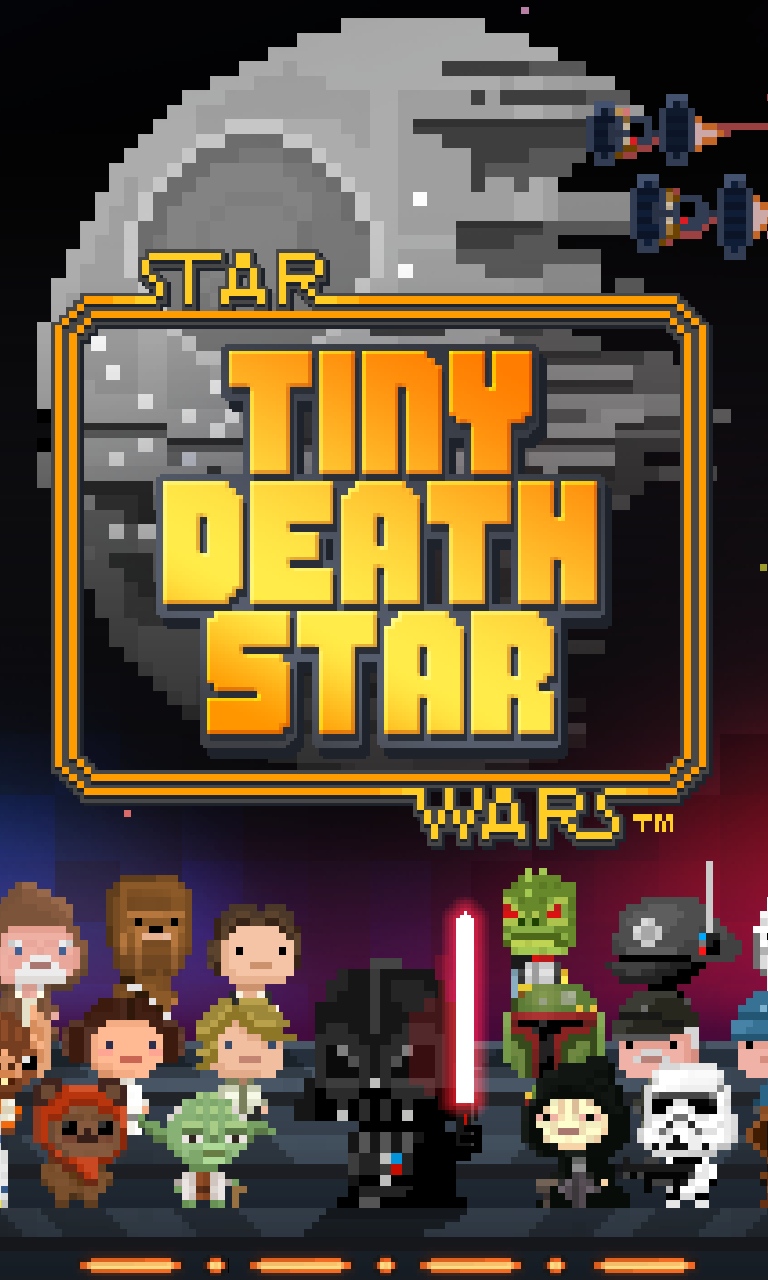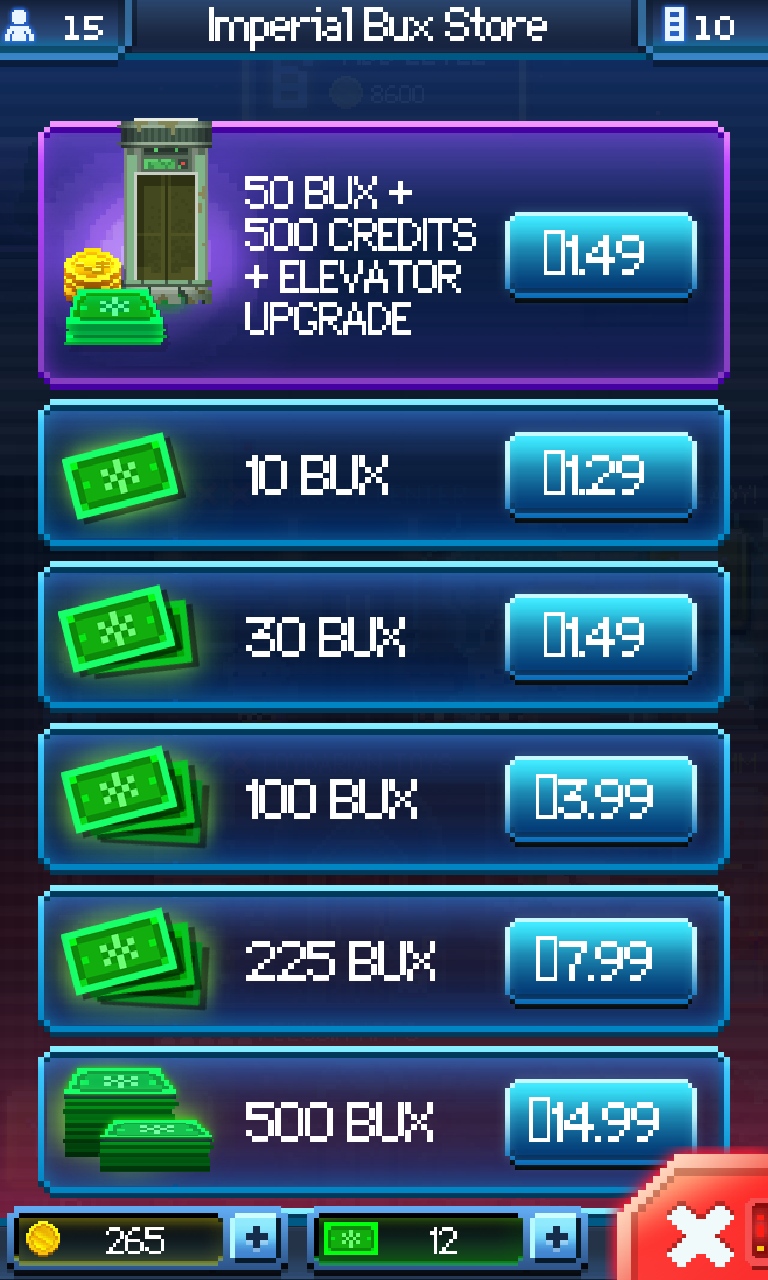Review: Star Wars: Tiny Death Star
Score:
76%
"I can feel a great disturbance in the freemium Force", I thought as I opened up the Windows Store last night. And the wallpaper in the app confirmed it. A familiar blocky face, a stylised logo... Nimblebit has finally arrived as a Windows Phone developer, and brought their management apps to the platform. But hold on, Tiny Death Star?
Version Reviewed: 1.0.0.16
Buy Link | Download / Information Link
Let's start with people who have already experienced the Nimblebit phenomenon. Tiny Death Star is a 'branded' version of Tiny Tower, with the same game mechanics, style, and rough costs (both in-game and for in-app purchases of extras). There are a few additions, namely the Emperor tasking you to do certain things, and as well as building the 'tower' units up from the ground floor, you can also build down into the core of the Death Star with lots of Imperial style floors such as 'Blast Doors' and 'Interrogation'.
Right, and now to bring everyone else up to speed with the Tiny Tower concept.
Your job is to build as high a tower as possible. You do this by building floors, and each floor has a specific function. In the original mobile game (just on iOS and Android, folks) these were residential, retail, recreational, food, and service. For Tiny Death Star, as noted above, an Imperial floor has been added.


These levels cost money to build. You start off the game with a small amount of money, but once a floor is built, it will contribute to your income. The floors that sell things (retail, recreational, food, and service) will automatically earn you coins - and they'll even continue selling when the game is not running or in the foreground.
What you do need to do is ensure that the floors remain stocked. You can check stock by tapping on any floor, and if you need to order anything, you can do so from this screen. It takes time for stock to arrive, and when it does you unpack it (again, with a tap), and then it starts selling.
Oh and you need staff for each level, and anyone who has moved into the Death Star's residential levels can be assigned to a working level. How does someone move in? You pick them up from the lobby in an elevator, and control the (incredibly slow) elevator to take them to their floor. They'll tip you some coins, and if it's a residential level with space, they might even move in.
That there is the cycle of the game - move people around the floors, keep the levels stocked with staff and supplies, earn the money, buy more stock, and buy more levels (or a faster elevator). How high can you build your Tiny Death Star tower?


Now, you can probably see some issues here (that slow elevator, everything takes time in the real world, you have to manage quite a lot) and this brings out the flaw in the original Tiny Tower that saw me stop playing. While you can speed up every one of these operations by spending game bux (not coins), the game buxs are not as prevalent as you would hope. To be fair, Nimblebit has always been very generous in their games with the in-app purchasing elements, and there is no pressing need at all to buy bux... but Tiny Tower does not make a huge amount of effort to hide the fact that it is a game of timers, all running at different speeds, and you need to be efficient to have them all drop to zero when you want to play the game, and leave them ticking down when you are doing other things.
This is a freemium game that will eventually fall off a gaming cliff. You'll play, play, play, and then go why, why, why, and stop. The cute graphics and gameplay will keep you going for longer than most titles like this (there's a very good reason why Tiny Tower is a landmark freemium game) but there will come a point where you hit your freemium wall.
Which is where the Star Wars side of things comes into play.
Rather than a straight port of Tiny Tower to Windows Phone, Nimblebit has been working with Disney/Lucasarts to create a Star Wars theme around their tower, and the result is Star Wars: Tiny Death Star. This takes their unique 8bit style (which means that, even on the high resolution screen of the Lumia 925, it still looks like a throwback to 1986, and it's all the better for it) and mixes in the usual Star Wars cast and look. It works well, and even if you've grown accustomed to the look in previous games it's fun to see just how close you can get to a Star Wars look with a handful of pixels.
It also is their second swing at Tiny Tower, and allows them to iterate on the issues found in the original. It does this in two main ways. The first is that you now have The Emperor overseeing your efforts to build a Tiny Death Star, and he is constantly advising you what he would like to see built next, or which menu option you should explore. This gives a bit more structure to the game, and while you can ignore him, the coin and bux rewards he offers help accelerate the slow period of building at the start of the game.
The second is the addition of the Imperial levels. These are built down from the lobby, and are all the evil parts of the empire. The levels are not staffed by residents, but by temporary hiring Supply Officers at 1000 coins a time. Use them to build up your inventory of Empire-goodies, which can then be sold on for more profit (and to please the Emperor).


Ultimately this lengthens the engagement of the game, but doesn't get around the fundamental issue of timers - building Imperial levels and crafting objects is still a matter of setting up and waiting for a time - but it does give Tiny Death Star a plot, threadbare that it is (and it's still more plot than The Phantom Menace - FX: rimshot - Ed).
I would have liked to have seen some form of cloud sync and backup in the code - on iOS the developers use iCloud to preserve and back up your progress and purchases, because you could be playing this game for weeks if you really get hooked. I also think that, by not being an Xbox Live title, and not having the gamer points that could potentially be on offer for achievements, they have lost a part of the ecosystem that could have enhanced the longevity and tied Tiny Death Star to a more tangible goal.
Tiny Death Star is one of the purest freemium games you can find. You don't need to spend real world money (but it helps), and you can play a long time before you simply get bored of it. It's a free download, and if you've never experienced a Nimblebit title, it's a good place to start.
Now, can we have Pocket Planes?
Reviewed by Ewan Spence at
